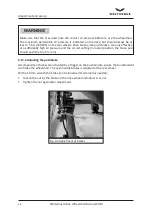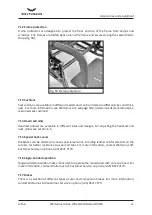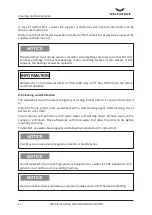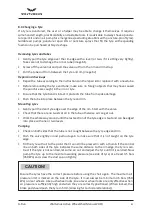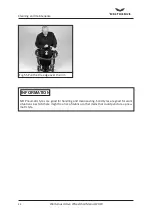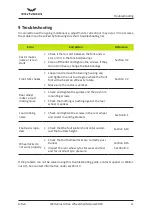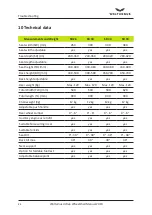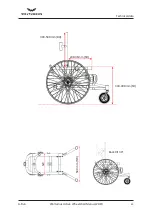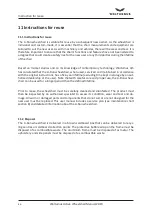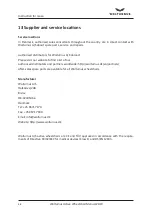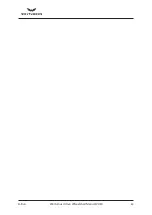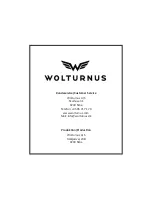
Wolturnus Active Wheelchair Manual 2019
8.3 Changing a Tyre
If a tyre is punctured, the user or a helper may be able to change it themselves. It requires
some hand strength, practical ability and suitable tools. It is advisable to always have a punctu
-
re repair kit and an air pump for emergencies (excluding situations with puncture-proof tyres).
Suitable air pumps, puncture repair kits or puncture sprays that fill the tyre with expanding
foam can be purchased at bicycle shops.
Removing tyres and tubes
•
Gently pull the tyre edge over the rim edge with a lever (or two, if it is sitting very tightly).
Take care not to damage the rim or tube (image 61).
•
Screw off the valve nut and pull the valve out from the rim and rim strap.
•
Pull the tube out from between the tyre and rim (image 62).
Repair and check-ups
•
Repair the tube according to the instructions on the repair kit or replace it with a new tube.
•
Before remounting the tyre and tube, make sure no foreign objects that may have caused
the puncture are caught in the rim or tyre.
•
Ensure that the tyre band is intact. It protects the tube from spoke damage.
•
Push the tube into place between the tyre and rim.
Mounting tyres
•
Gently pull the clear tyre edge over the edge of the rim. Start with the valve.
•
Check that there are no twists at all in the tube, otherwise air can get out.
•
Work the whole way around until the last section of the tyre edge is taut and can be edged
into place with one or two levers.
Pumping
•
Check on both sides that the tube is not caught between the tyre edge and rim.
•
Push the valve lightly in and pull out again to make sure that it is not caught on the tyre
edge.
•
Fill the tyre with air to the point that it can still be pressed in with a thumb. If the control
line on both sides of the tyre indicates the same distance to the rim edge, the tyre is cen-
tred. If the tyre is not centred, let some air out and adjust the tyre until it is centred. Now
pump the tyre up to the maximum working pressure (see side of tyre) or at least 3.5 bars
(350 kPa) and screw the dust cap on tightly.
Ensure the tyres have the correct pressure before using the chair again. The maximum air
pressure limit is marked on the side of the tyre. It must always be minimum 3.5 bars (350
kPa) on rear wheels. Like push wheel locks, knee-lever wheel locks are only effective when
air pressure is sufficiently high and when they are correctly positioned. (When locked, the
brake pad should push the tyre in 5mm (allowing for technical alterations)).
CAUTION!
A-Run
41
Summary of Contents for Dalton
Page 2: ......
Page 49: ...Wolturnus Active Wheelchair Manual 2019 A Run 49 ...




